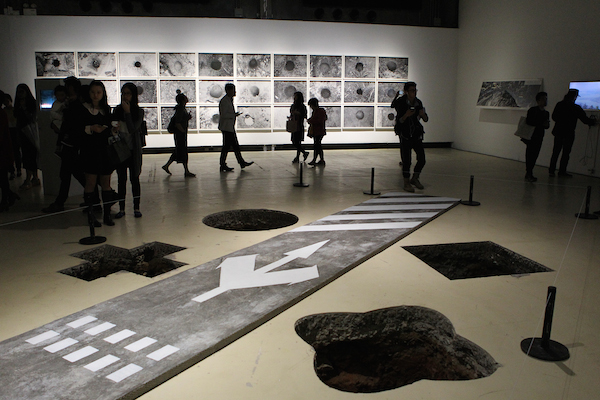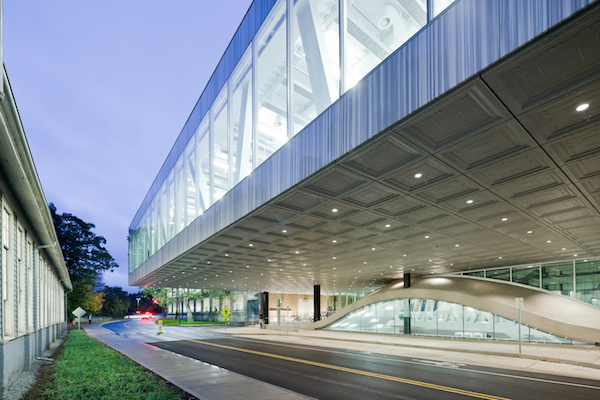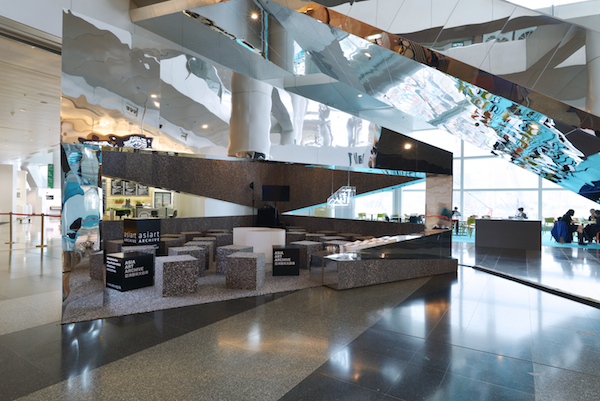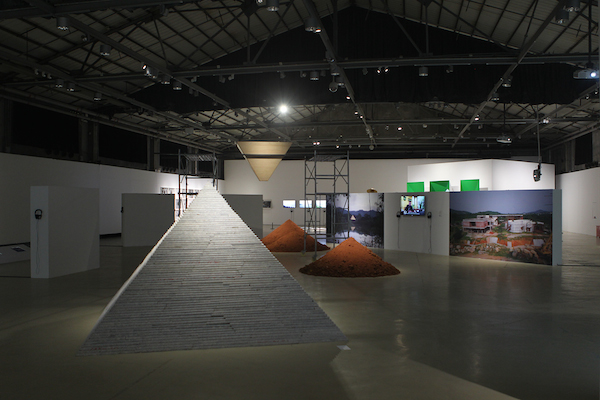COLLECTIVE’s temporary installations may be short-lived, but they leave a lasting impression. The design studio’s founder talks to Christie Lee about confounding expectations and impermanent spaces.

April 27th, 2016
If Hong Kong architect Betty Ng owes a debt to anyone for her impressive achievements, it might just be to Soviet painter and architect Vladimir Tatlin. Architecture, after all, wasn’t Ng’s first love: young Ng had intended on becoming a surgeon. It wasn’t until she chanced upon Tatlin’s sketch for his magnificent – and doomed – Tatlin’s Tower at a friend’s studio one day that she decided to switch fields.
A Bachelor’s and Master’s degree from Cornell and Harvard Universities respectively were followed by stints at Studio Fuksas and Herzog & de Meuron, and then in 2006, she joined Rem Koolhaas’ OMA.
Over the years, she worked in their New York, Hong Kong and Rotterdam offices. In 2014, she left her post as Design Director of the Rotterdam office to set up COLLECTIVE, a Hong Kong-based architectural firm made up of architects and academics. The firm has come to specialise in exhibition design, with their latest creation, “Digging a Hole in China”, on display at OCAT Shenzhen (OCT Contemporary Art Terminal) until 26 June 2016.

“Digging a Hole in China”, OCAT Shenzhen, photo courtesy of OCAT Shenzhen
In what ways has an academic background in theory and visual studies informed your practice? Could you walk us through your design process?
I did my secondary school education in Hong Kong, prepping for medical school by focusing wholeheartedly on the sciences. We were trained rather diligently in memorising formulas. During my studies at architecture school, I was deeply drawn to theory and visual studies, as I was exposed to so many valuable revelations on the critical nature of architecture on top of the essential building technology and construction. It was exhilarating.
In our practice at COLLECTIVE, we tend to unlearn the learned, to assert our identity through relinquishment. This is the way we impose design and negate desires to be different in all instances because every instance is unique. We do not apply a formula in our design process; we tackle each case differently.
What is your first design memory?
Seeing a picture of cut fingers on our first day of woodshop orientation in architecture school – 30 minutes later, I was on the table saw-cutting wood.
And your first architectural memory?
Participating in the design and construction of Milstein Hall while I was at OMA New York, which was an expansion of the architecture school, where I learned how to use the table saw.

Milstein Hall at Cornell University, courtesy of OMA, photo by Iwan Baan
Do you have a favourite material?
We don’t do favourites. At COLLECTIVE, we have a habit of appropriating materials in an unfamiliar way. For our Open Platform design at Art Basel for Asia Art Archive this year, we specifically created a mixture of high-density foam that serves both as the acoustic interior lining of the pavilion as well as the seating cubes for the pavilion’s participants.
From a distance, the foam seems to resemble the terrazzo and marble surfaces already used in the site context of the convention centre. [When you get closer] the tactility of the foam is a surprising relief for the users, offering softness as a refuge from the commotions of the surrounding art fair. We did a few trials with the hues for the recycled and reconstituted foam, which is normally used for the inside of mattresses and other products, and is invisible to the user. In our design, we overlap the industrially produced with the sensitivity of the craftsmen.

Open Platform 2016 for Asia Art Archive at Art Basel in Hong Kong, courtesy of COLLECTIVE, photo by Kevin Mak
What did you learn from Rem Koolhaas when it comes to design?
Crafting oxymoron.
What does ‘collective’ mean in the context of your practice?
The nature of architecture has always been a result of combined forces and the architect is a singular image created by these conglomerated efforts; as architectural projects get more complex, so do the varying forces embedded inside.
COLLECTIVE’s portfolio contains a mixture of permanent and ephemeral projects. Has that always been the intention?
The life span of a building is on average shorter than the life span of a human being. In this case, permanence is relative.
Architects cannot stop at solely practising the permanent spatial agenda; we should place importance on the abstraction of architecture, to expand architectural thinking critically from spatial experiences to context, programme, organisation, politics, culture, economics, psychologies, technologies etc.
COLLECTIVE is interested in expanding the practice of architecture design to the continual changes that occur in how we live, work, learn and enjoy.

“Digging a Hole in China”, OCAT Shenzhen, photo courtesy of OCAT Shenzhen
“Digging a Hole in China”, our exhibition design for OCAT Shenzhen, was a successful experiment for us in exercising the spatial agenda as architects, to work around the cha-cha of imposing our spatial narration as ‘design’ and negating the curatorial intention. If it is an ephemeral spatial project in one definition, then to us it is a representation of a persistent design methodology.
Betty Ng
bettyng.com
COLLECTIVE
collective-studio.co
A searchable and comprehensive guide for specifying leading products and their suppliers
Keep up to date with the latest and greatest from our industry BFF's!

In the pursuit of an uplifting synergy between the inner world and the surrounding environment, internationally acclaimed Interior Architect and Designer Lorena Gaxiola transform the vibration of the auspicious number ‘8’ into mesmerising artistry alongside the Feltex design team, brought to you by GH Commercial.

Sub-Zero and Wolf’s prestigious Kitchen Design Contest (KDC) has celebrated the very best in kitchen innovation and aesthetics for three decades now. Recognising premier kitchen design professionals from around the globe, the KDC facilitates innovation, style and functionality that pushes boundaries.

Marylou Cafaro’s first trendjournal sparked a powerful, decades-long movement in joinery designs and finishes which eventually saw Australian design develop its independence and characteristic style. Now, polytec offers all-new insights into the future of Australian design.

Channelling the enchanting ambience of the Caffè Greco in Rome, Budapest’s historic Gerbeaud, and Grossi Florentino in Melbourne, Ross Didier’s new collection evokes the designer’s affinity for café experience, while delivering refined seating for contemporary hospitality interiors.
The internet never sleeps! Here's the stuff you might have missed

We spoke with Jeffrey Wilkes of WILKESDESIGN about the John Portman-designed building, which has been infused with touches of local culture and colour.

Simon Liley, Principal Sustainability Consultant at Cundall, writes about how cyberpunk dystopias haven’t (quite) come to pass yet – and how designers can avoid them.